Discover the Hawaiian Green Sea Turtle: Facts and Insights
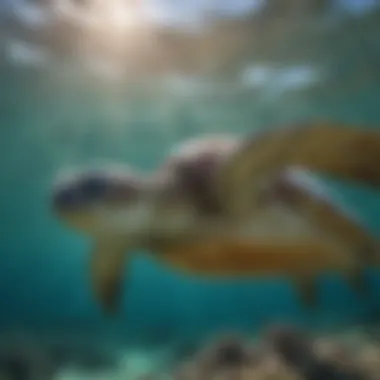
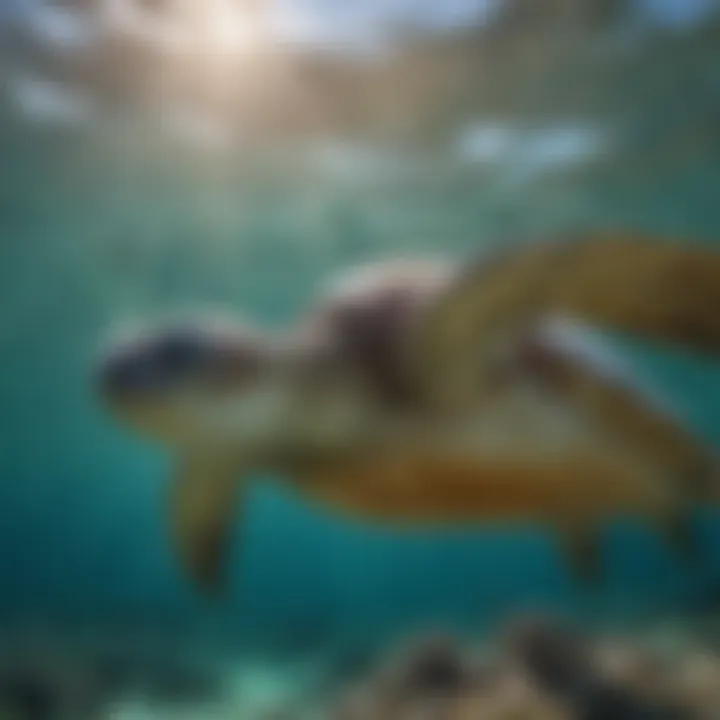
Nature Topic Overview
Hawaiian green sea turtles, or Honu as they’re called in Hawaiian, are magnificent creatures that glide gracefully through the warm waters of the Hawaiian Islands. These turtles are not just any ordinary sea turtles; they hold a significant place in the marine ecosystem, and their presence is a symbol of resilience and wisdom in Hawaiian culture. They often represent longevity, peace, and good luck.
Honu can grow quite large, sometimes reaching weights of over 300 pounds! Their unique shell is usually olive to dark green, giving them their name. They can even live for over 80 years, much longer than many other animals. This article explores the enchanting world of the Hawaiian green sea turtle, shining a light on their biological traits, habitats, diets, roles in folklore, and essential conservation efforts.
Fun Facts and Trivia
Did you know that Hawaiian green sea turtles are not truly green? Their name comes from the greenish color of their body fat! Here are some light-hearted yet fascinating facts that will pique the curiosity of young readers:
- Epic Swimmers: These turtles can hold their breath for up to five hours while diving.
- Veggie Lovers: Unlike other sea turtles that are carnivorous, honu primarily eat seaweed and seagrass.
- Unique Shells: Each turtle has a shell with its own distinct pattern, almost like a fingerprint.
To make learning even more fun, consider using visuals or interactive elements like stickers of turtles or drawings of their habitat!
Wildlife Explorations
When living in or visiting Hawaii, you can find other fascinating animals that share the ocean with the Hawaiian green sea turtle. For example, the colorful reef fish and graceful manta rays make excellent companions in this underwater world. Additionally, many species of coral provide shelter for tiny creatures.
Here are a few more ocean dwellers to discover:
- Humpback Whales: These massive creatures migrate to Hawaii every winter to breed and give birth.
- Hawaiian Monk Seals: A critically endangered seal found only in the Hawaiian Islands.
- Colorful Fish: Such as Parrotfish and Surgeonfish that brighten the coral reefs.
You might even consider a fun quiz or a puzzle to test your knowledge about these amazing animals!
Environmental Awareness
Understanding the importance of conservation related to Hawaiian green sea turtles is essential. These turtles face many threats, from habitat loss to pollution and entanglement in fishing gear. Here are some engaging ways children can help protect these marine
Preface to the Hawaiian Green Sea Turtle
The Hawaiian green sea turtle, known locally as "honu," is not merely a creature of the ocean; it holds great significance in both the natural world and Hawaiian culture. Understanding this tortoise-like marine reptile can provide rich insights into its role within its marine habitat, the stories and legends that surround it, and the pressing need for its conservation.
Importance of the Hawaiian Green Sea Turtle
Hawaiian green sea turtles are more than just an attractive sight while swimming in the clear waters. They play a vital ecological role, contributing to the health of coral reefs by grazing on sea grasses and algae. This feeding behavior helps maintain the balance within the marine ecosystem by preventing overgrowth that can suffocate coral and other marine life.
Beyond their ecological importance, honus are also deeply embedded in Hawaiian mythology and cultural practices. Stories of these turtles have been passed down through generations, highlighting their strength and resilience. For instance, many legends tell of the honu as a guardian of the Hawaiian islands. Families often tell their children about these tales, providing a connection to their heritage and the ocean's mysteries.
Benefits of Learning About the Honu
For young learners and their families, exploring facts about Hawaiian green sea turtles can inspire an appreciation for wildlife. Here are a few benefits of this exploration:
- Fostering environmental awareness: Understanding the honu promotes a sense of responsibility towards marine conservation, something that is crucial for a sustainable future.
- Encouraging curiosity about nature: Questions like "How do sea turtles breathe underwater?" or "What do they eat?" can spark deeper interest in marine biology.
- Promoting cultural literacy: Learning about the cultural significance of the honu fosters respect and appreciation for Hawaiian traditions, enhancing one’s perspective on different cultures.
"The Hawaiian green sea turtle teaches us more than just facts; it shares a story of connection to our oceans and our planet."
In this section, we have laid the groundwork to delve more deeply into the various aspects of this magnificent creature in subsequent sections. From its physical characteristics to its significance in Hawaiian culture, the Hawaiian green sea turtle is a remarkable emblem of our oceans and a symbol of the need for conservation efforts.
Physical Characteristics
Understanding the physical characteristics of the Hawaiian green sea turtle is like getting the key to a treasure chest of wonders. These traits not only help the turtles adapt to their environment but also play a significant role in their biological processes and survival strategies.
Size and Weight
Hawaiian green sea turtles can grow to be quite hefty. Typically, these turtles reach between 3 to 4 feet in length and can weigh anywhere from 240 to 420 pounds. That’s roughly as heavy as a small car! Their size is a form of defense; it makes them harder for predators to take on. The larger a turtle is, the less likely it is to fall prey to animals like sharks.
These turtles grow at different rates, depending on factors like diet and age. Young turtles, who weigh just a few ounces when they hatch, grow rapidly. It can take them up to 50 years to reach their maximum size. That’s patience, isn’t it?
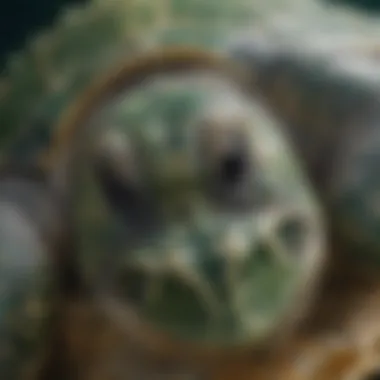
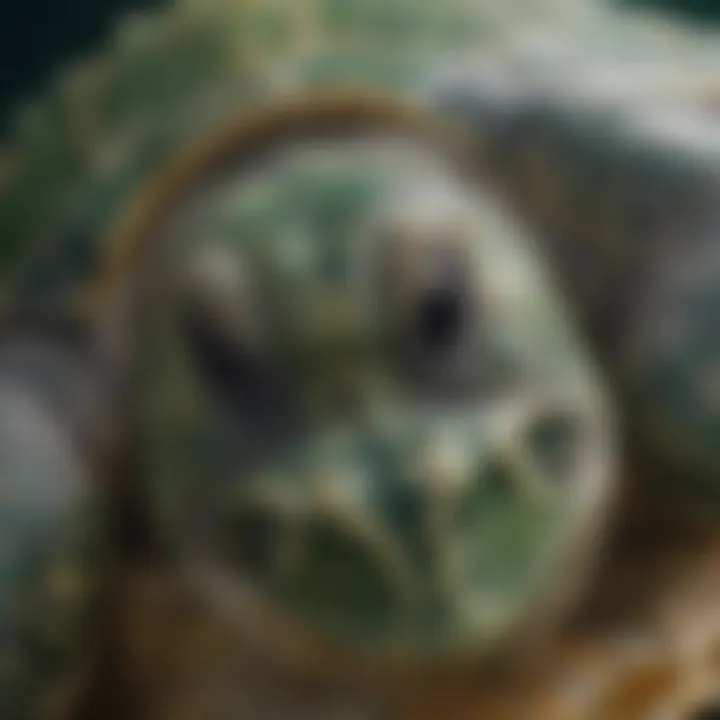
Shell Structure and Coloration
The shell, or carapace, of the Hawaiian green sea turtle is not only a protective shield but also a canvas of art. Typically, the shell is a stunning olive green, decorated with patterns that can be unique to each turtle, much like a fingerprint. This remarkable coloration comes from the algae that grow on them and the natural pigmentation in their shells.
The structure of the shell is made up of hard plates called scutes, which help protect the turtle from injuries. Interestingly, their shells are not completely solid. They’ve got a bit of flexibility, which allows them to maneuver easier through the water. When swimming, their streamlined shapes enable them to glide swiftly, which makes them one of the most graceful swimmers in the ocean.
Lifespan and Growth
Hawaiian green sea turtles enjoy a long and rich life. They can live up to 80 years, sometimes even longer! Their lifespan is influenced by their environment and the threats they face. As they grow older, these turtles continue to grow, albeit slowing down significantly after reaching maturity.
Young turtles tend to grow faster and experience different growth stages based on their habitat. Most start to feed in coastal areas rich in seagrass, as this is a vital part of their diet.
While they grow up, these turtles go from vulnerable hatchlings to impressive adults, and their age can often be estimated by examining the growth rings in their shells, much like counting the rings of a tree.
Habitat and Distribution
Understanding the habitat and distribution of the Hawaiian green sea turtle is crucial because it lays the foundation for its survival and wellbeing. Knowing where these turtles live and what environments they prefer gives us insight into their behaviors, feeding habits, and interactions within their ecosystem. It’s vital for conservation efforts as well, helping to identify the areas that need protection to ensure the continuation of this magnificent species.
Geographical Range
The Hawaiian green sea turtle, also known as Honu in Hawaiian, can be found from the warm waters of the Hawaiian Islands to other parts of the Pacific Ocean. The geographical range of these turtles is primarily concentrated in areas rich in food sources, usually where seagrass and algae are abundant. They travel thousands of miles in their lifetime, often returning to the same nesting sites. This migratory behavior shows their strong connection to specific locations in the ocean. A significant percentage of their population resides in the waters surrounding Hawaii, which is crucial for their breeding and feeding.
Preferred Environments
When it comes to their preferred habitats, the Hawaiian green sea turtle is quite particular. These turtles are often seen in:
- Coral Reefs: Rich in biodiversity, coral reefs provide shelter and a variety of food.
- Shallow Coastal Areas: Turtles often graze on seagrass in these regions. They enjoy the warm, shallow waters that also serve as nurturing grounds for young turtles.
- Nesting Beaches: Female turtles return to sandy beaches to lay their eggs, favoring locations with minimal human disturbances. This is crucial for the hatching success of their offspring.
"The connection that these turtles have with their habitats extends beyond mere survival; it's about the delicate balance of the marine ecosystem in which they play a part."
Protecting these environments is imperative for their survival. Changes in water temperature, pollution, and human activities greatly affect their natural habitats. As young turtles grow, maintaining their preferred environments becomes essential for their proper development and growth.
In summary, the habitat and distribution of the Hawaiian green sea turtle play an essential role in its life cycle, impacting feeding, nesting, and overall population health.
Diet and Feeding Habits
Understanding the diet and feeding habits of the Hawaiian green sea turtle is key to learning about this unique creature. What these turtles eat plays a big part in their health, growth, and the ecosystems they support. Being primarily herbivorous, they have adapted to thriving on a menu that reflects their oceanic home. Their feeding patterns and food choices not only shape their own lives but also help maintain the health of seagrass beds and coral reefs.
Main Food Sources
The Hawaiian green sea turtle has a preference for a plant-based diet. Here is a list of their main food sources:
- Seagrasses: These underwater plants are crucial for the turtles' sustenance. They munch on various types like turtle grass and manatee grass, which thrive in shallow waters.
- Algae: Turtles enjoy a variety of algae, from the bright green sea lettuce to thick, brown kelp. This not only adds diversity to their meals but also provides essential nutrients.
- Other Marine Plants: Occasionally, they might nibble on some corals or sponge species, though this is not their primary food source.
In essence, these turtles are nature's lawnmowers, helping to keep seagrass beds healthy and prevent overgrowth, which in turn benefits other marine life.
Feeding Behavior
How the Hawaiian green sea turtle feeds is equally fascinating. When it comes to their approach:
- Grazing: Most of the time, they graze slowly along the sea floor, munching on seagrasses and algae. This behavior allows them to consume a significant amount of vegetation, ensuring they meet their energy needs.
- Suction Feeding: At times, they exhibit suction feeding, where they create a vacuum to pull in tasty algae. This technique aids them in efficiently gathering food stuck on rocks or surfaces.
- Seasonal Variations: Depending on the time of year, their feeding patterns can shift. For example, if seagrass is abundant during certain seasons, they may increase their intake to prepare for reproductive cycles.
Turtles feast on the bounty of the ocean floor, their eating habits creating balance in their habitats.
In sum, the diet of the Hawaiian green sea turtle doesn’t just sustain them but also plays an integral role in maintaining the health of marine ecosystems. Their vegetarian lifestyle may seem simple, but it’s packed with important ecological benefits that reach far beyond their own needs.
Reproductive Cycle
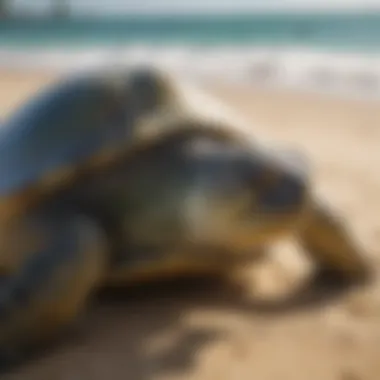
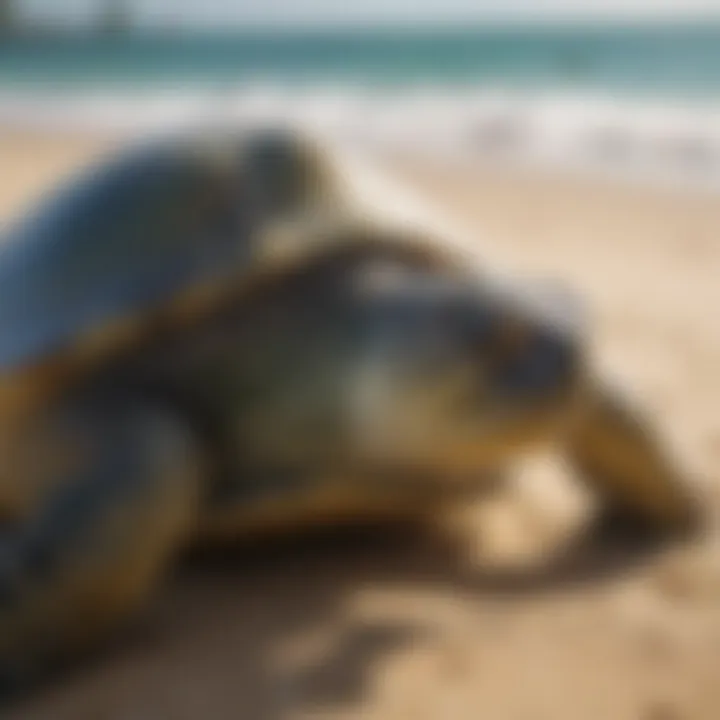
The reproductive cycle of the Hawaiian green sea turtle is a fascinating aspect of their life that deserves attention. Understanding this cycle not only highlights the challenges these turtles face but also emphasizes the necessity of conservation efforts to ensure their survival. By diving into the details of their mating, nesting, and hatching behaviors, we can appreciate the complexity of their life cycle and recognize why these stages are critical for the species' continuity.
Mating Rituals
During the mating season, which typically occurs from late spring to early fall, male green sea turtles become quite the romantics. They are known to compete with one another for the attention of the females. This can get a bit rowdy, as males may engage in displays of strength, including biting and latching onto the females. These courtship displays, though seemingly aggressive, are part of their natural behavior that helps ensure that the fittest males will pass on their genes.
In shallow waters near coral reefs or sandy bottoms, the males and females can be seen swimming together. The bond may appear fleeting, but this is all part of the natural ebb and flow of the mating process. The actual act of mating can last for hours and often occurs in multiple sessions, showcasing the turtles’ determination in this intimate phase of their lives.
Nesting Behaviors
After successful mating, female Hawaiian green sea turtles will embark on the monumental task of nesting. It begins with a journey back to the land, often the very beach where they themselves hatched years prior. This remarkable behavior is known as natal homing. Once they arrive at the beach, they meticulously choose a suitable spot, usually a sandy area that is safe from high waves and human activity.
The females dig a hole using their flippers and lay between 80 to 120 eggs in a single nest. The eggs are round and have a soft shell, similar to that of a ping-pong ball. After laying the eggs, mama turtle covers them with sand, disguising them from predators. This remarkable instinct ensures that, once the eggs are buried, they can develop for about two months before hatching.
"A turtle will often lay more than one clutch of eggs in a nesting season, sometimes returning to the same beach multiple times."
Hatching Process
Now comes the most exciting part: hatching! About 60 days after the eggs are laid, tiny sea turtle hatchlings emerge from their sandy nests. This is no easy feat. The hatchlings break through their eggs and use their small but strong flippers to dig their way up to the surface. Once they reach the top, there's a race to the sea!
During this perilous journey, the hatchlings are vulnerable to a variety of predators, including birds and crabs. Only a few actually make it to the ocean, but those who do are often guided by the natural light of the moon reflecting off the water's surface. This innate navigational skill is critical for their survival. Once in the ocean, the hatchlings begin their life as part of the pelagic zone, where they will remain for several years before returning to shore.
The reproductive cycle of the Hawaiian green sea turtle is a remarkable journey of instinct, danger, and survival. Understanding these phases not only educates the public but also instills a deeper appreciation for the efforts needed to protect these magnificent creatures and their habitats.
Cultural Significance in Hawaii
The Hawaiian green sea turtle, known locally as Honu, holds a prominent place in the hearts of the Hawaiian people. Beyond being a remarkable creature of the ocean, the Honu carries deep-rooted cultural and spiritual significance. This section will dive into its role within Hawaiian mythology, as well as how it finds expression in various forms of art and daily life.
Role in Hawaiian Mythology
In Hawaiian lore, the Honu is often seen as a symbol of wisdom, patience, and good luck. Many stories depict the turtle as a guardian of the islands, guiding lost sailors back to shore. According to local legends, the goddess Hina is sometimes associated with the turtle, believed to gift them to the waters as her children, providing protection and sustenance to all.
Moreover, the Honu is featured in tales of ancient navigators who traveled the seas, following the turtles as they guided them to the best fishing grounds. This connection to navigation makes the Honu an emblem of safety and guidance for many local fishermen even today. The turtle’s journey through the oceans resonates with the journey of life itself, symbolizing perseverance and resilience.
"The Hawaiian green sea turtle teaches us to navigate life's challenges with grace and patience."
Turtles in Art and Culture
The presence of Honu in art and culture is strikingly vivid in Hawaiian traditions. Turtle motifs are prevalent in textiles, tattoos, and carvings, representing not just the creature itself, but also the values it embodies. When it comes to tattoos, many Hawaiians opt for designs that incorporate the Honu, viewing it as a protective symbol that connects wearers to their heritage.
In crafts, artisans often create wooden carvings and jewelry featuring turtle designs. These pieces are typically used in celebrations and rituals, where they signify good fortune and a link to the ocean's bounty. Additionally, the Honu frequently makes appearances in contemporary art, illustrating how this ancient symbol continues to evolve within modern contexts.
Here are a few ways Honu are celebrated in culture:
- Local Festivals: Events featuring turtles, where stories are shared and traditional dances showcase their significance.
- Environmental Art: Installations that promote awareness of conservation, emphasizing the need to protect these gentle creatures.
- Educational Programs: Schools incorporate Honu teachings in syllabi to share its story with younger generations, fostering respect and admiration for marine life.
Through these expressions, the Hawaiian green sea turtle remains not just an animal of the sea, but an integral part of the cultural identity of Hawaii. It stands as a testament to the interconnectedness of nature and the values held dear by the people of these islands.
Ecological Role
The Hawaiian green sea turtle is not just a beautiful creature gliding through the ocean; it holds a crucial position in marine ecosystems. Understanding its ecological role reveals how these turtles contribute to maintaining the balance of life beneath the waves. Their existence is woven into the fabric of marine life, influencing everything from algae growth to the health of coral reefs.
Impact on Marine Ecosystems
Hawaiian green sea turtles primarily feed on sea grasses and algae. This feeding habit plays a significant role in the underwater landscape. When turtles munch on sea grasses, they help control the growth of these plants. As they graze, green turtles prevent any one species from taking over, ensuring that no particular type of plant dominates the seafloor. This balance is similar to a gardener tending to various plants, allowing a diverse underwater garden to flourish.
Moreover, this grazing helps maintain healthy seagrass beds, which serve as vital habitats for many small marine creatures. Fish and invertebrates find shelter in these lush underwater meadows, and the health of these habitats can be closely linked to the turtles' grazing behaviors.
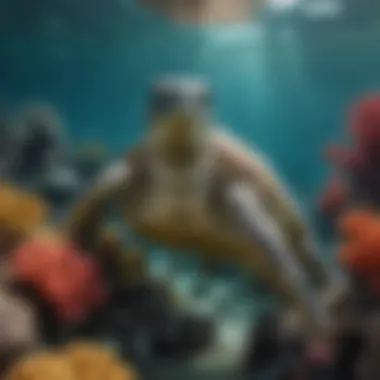

Interactions with Other Species
Green sea turtles don’t live in isolation; they're part of a larger community. Their interactions with other marine species are quite significant and hinge on unexpected relationships. For instance, smaller fish often use turtles as their mobile homes. These little fish, known as cleaner fish, nibble parasites off turtles' shells and skin. It's a win-win situation; cleaner fish get their meals, and turtles enjoy a good scrub!
Turtles also have a role in nutrient cycling in the ocean. As they eat and digest food, they produce waste that fertilizes the water and benefits other organisms. This nutrient-rich waste is like adding fertilizer to a garden, enabling new growth and improving the health of the ecosystem.
"The Hawaiian green sea turtle is more than just a pretty face; it helps keep the marine ecosystem in balance through its eating habits and interactions."
Integrating more species into the conversation includes sharks and rays. These larger predators help keep turtle populations in check, highlighting the importance of predator-prey relationships in maintaining ecological balance. If turtle populations grow too large without natural checks, they can overgraze areas, leading to potential harm for marine ecosystems.
In summary, the Hawaiian green sea turtle's role in the ecosystem is multifaceted and essential. By promoting healthy seagrass beds, interacting with various marine species, and contributing nutrients back into the ocean, these turtles play a vital part in ensuring the robustness of marine life around Hawaii.
Conservation Status
The conservation status of the Hawaiian green sea turtle is crucial to understand for anyone interested in marine life. These majestic creatures have seen a decline in their populations due to various pressing threats. Knowing what threatens them helps us recognize the need for protective measures. Additionally, understanding their status not only raises awareness but also empowers communities to advocate for their conservation.
Threats to Population
One of the biggest threats to Hawaiian green sea turtles is habitat destruction. Coastal development has led to the loss of nesting sites. Pollution, like plastic waste, poses another serious risk. Turtles often mistake plastic for jellyfish, their favorite snack, which can lead to serious health issues or even death.
Another critical threat comes from climate change, which has been rising the sea temperatures and affecting the turtles’ food sources. Warmer oceans can lead to the bleaching of coral reefs, which disrupts the balance of marine ecosystems.
Here is a brief look at some key threats:
- Pollution: Chemicals and plastics harm turtles directly and affect their habitat.
- Fishing nets: Turtles can be accidentally caught in fishing gear, leading to injury or drowning.
- Climate change: Alters the environment and impacts food availability as well as beach conditions.
"Taking care of our oceans means taking care of the turtles. Every action counts!"
Conservation Efforts
Efforts to conserve Hawaiian green sea turtles are multi-faceted and involve many stakeholders, like local communities, scientists, and governments. Education plays a significant role in these efforts. Teaching children and adults alike about the importance of turtles helps create a community that values and protects marine life.
The implementation of protected marine areas has greatly benefited these turtles. These areas allow them to thrive without the dangers of fishing and pollution. Families visiting Hawaii can also contribute to turtle conservation. By participating in beach clean-ups or becoming responsible tourists, they help preserve natural habitats.
Some ongoing conservation initiatives include:
- Monitoring turtle populations: Scientists keep track of how many turtles are born and how they are doing as they grow up.
- Research and data collection: Gathering information about turtle behavior and health helps to form better conservation strategies.
- Community awareness programs: Schools and local organizations work together to promote the protection of turtles and their habitats.
By collectively embracing these efforts, we can work towards securing a future for the Hawaiian green sea turtle and ensure they continue to grace our oceans for generations to come.
Awareness and Education
Awareness and education play vital roles in the preservation and understanding of the Hawaiian green sea turtle. This article aims to illuminate the intricacies of these magnificent creatures and the ecosystems they inhabit. Why is this important, you ask? Well, when we recognize the challenges facing these turtles and the nuances of their behaviors and habitats, we empower ourselves to be better stewards of the ocean.
For children, awareness can ignite a passion for marine conservation. At young ages, children are curious about the world around them. If they learn about the Hawaiian green sea turtle, they might become more mindful of marine life and take steps to protect it. This can include simple actions like reducing plastic use, which is harmful to ocean creatures.
Moreover, education fosters respect for all living things. When children understand the life cycle of the green sea turtle, the importance of its habitat, and the consequences of human actions, they start forming a connection with nature. This nurturing of empathy could lead to a more sustainable future where humans and nature coexist harmoniously.
"Education is the most powerful weapon which you can use to change the world."
— Nelson Mandela
Role of Education in Conservation
Education lays the groundwork for effective conservation efforts. When kids learn about the Hawaiian green sea turtle's critical role in marine ecosystems, they are more likely to support conservation initiatives. Schools can play an essential part in this journey, incorporating lessons about local wildlife into the curriculum. Activities such as field trips to nature reserves or marine sanctuaries can deepen children’s understanding.
Additionally, interactive sessions, like workshops led by marine biologists, can be beneficial. Experiencing hands-on learning, such as observing turtle nesting sites or participating in beach clean-ups, makes the information resonate. Here’s why education matters:
- Informed Decisions: Children learn how their choices impact turtles and other marine life.
- Active Participation: They might want to engage in advocacy or volunteer efforts.
- Long-lasting Impact: Knowledge often translates to lifelong dedication to conservation.
Resources for Further Learning
To keep the curiosity alive, various resources can help children dive deeper into the world of Hawaiian green sea turtles. Here are a few that can keep the flame of interest burning:
- Books: Look for engaging titles about sea turtles tailored for kids. These books often combine fun facts with colorful illustrations.
- Websites: Sites like en.wikipedia.org and britannica.com offer excellent information suitable for different age levels.
- Community Programs: Local aquariums or wildlife centers often host educational programs focused on marine life. They are excellent places for hands-on learning and engagement.
- Documentaries: Viewing documentaries about marine ecosystems can also captivate young minds, showing the beauty and vulnerability of sea turtles.
The more children know, the more they will care. By fostering awareness and providing educational resources, we cultivate a generation that not only understands the critical role of the Hawaiian green sea turtle but also champions the cause of marine conservation.







